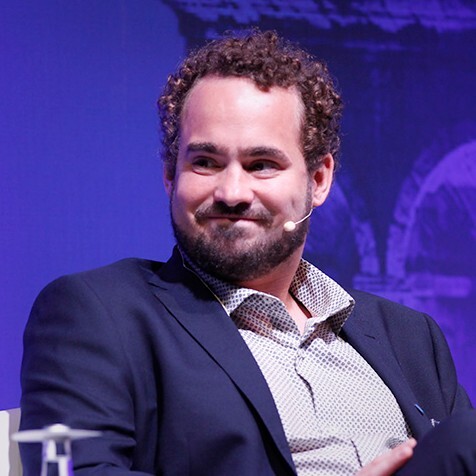-
Written by Christopher Van Mossevelde
Head of Content at Funnel, Chris has 20+ years of experience in marketing and communications.
-
 Reviewed by Tommy Albrecht
Reviewed by Tommy AlbrechtPerformance Marketing Manager at Funnel
-
 Reviewed by Lee Riley
Reviewed by Lee RileyA Performance Marketing manager at Funnel, Lee has 10 years of experience in digital marketing. He has a proven history of working with data analytics and building strategic solutions, mostly within agency roles.
We’ve all been there. The first time you see a new ad, it feels fresh and inspiring. But after the tenth time, it’s no longer welcome. That’s ad fatigue: when audiences see the same creative so often that engagement drops and costs rise.
For marketers, ad fatigue isn’t just an annoyance. It’s a performance and budget problem. Left unchecked, it drives up customer acquisition costs, wastes spend and makes campaigns less effective. Recognizing and preventing it is essential to protecting marketing ROI and maximizing effectiveness, which is why it’s top of mind for marketing leaders today.
At Funnel, we see the effects of ad fatigue across hundreds of brands and agencies. The good news? With the right data and creative strategies, you can spot the warning signs early and take action before performance and budgets suffer.
What is ad fatigue?
Ad fatigue happens when your audience sees the same creative too many times. As engagement drops, platform algorithms recognize the ad as stale and begin downranking it. That means your ad is shown less often, to fewer people, and your cost per click or acquisition goes up. In other words, ad fatigue doesn’t just hurt engagement but also directly impacts reach and spend efficiency.
It’s important to note that ad fatigue isn’t the same as brand fatigue. People may still like your company; however, they’re just tired of seeing the same execution over and over.
This can play out across both consumer and B2B campaigns. For example, a LinkedIn lead gen ad might drive results at first, but after weeks of showing the same headline and image to a small target audience, clicks plummet and costs rise.
Just like a long-term guest is easier to live with when they change their habits, audiences respond better when you vary your creative. Fresh formats, visuals, or messages can turn fatigue into renewed attention without losing consistency in your brand story.
How to recognize when ad fatigue occurs
It will become pretty obvious when ad fatigue occurs. Suddenly, your paid ads, content marketing, and other strategies fail to engage audiences. The audience will stop paying attention and interacting with your advertising campaigns – and the data will show it.
Ad fatigue shows up clearly in the data, long before you “feel” it. If you rely on gut instinct, you’ll usually notice too late, after budgets have already been wasted. Instead, monitor your key performance indicators (KPIs). When these begin trending in the wrong direction, it’s often a sign of fatigue:
| KPIs | What happens | Why it matters |
|
Click-through rate (CTR) ↓ |
People stop engaging with your ads after repeated exposure. |
First signal that attention is slipping. |
|
Cost per click (CPC) ↑ |
Algorithms need to work harder to get the same clicks. |
Efficiency drops, budgets deplete faster. |
|
Conversions ↓ |
Audiences get annoyed or tune out. |
Sales and leads slow down. |
|
Frequency ↑ (cause) / Delivery ↓ (effect) |
Audiences see the same creative too often, which triggers lower engagement. Platforms then downrank the ad and serve it less often. |
You waste spend on the same people, then lose reach as algorithms prioritize fresher ads. |
|
Return on ad spend (ROAS) ↓ |
You pay more for less impact. |
Overall campaign profitability erodes. |
You might also see video view rates drop or cost per acquisition (CPA) climb. The pattern is consistent: engagement weakens, costs rise, and efficiency falls.
The key is to let data guide you, not intuition. With a unified view of CTR, CPC, ROAS and more across all platforms, marketers can act before ad fatigue eats into ROI. That’s why having a centralized marketing intelligence layer (like Funnel) is critical. It helps you detect the early signals and make confident decisions
Expect to see other areas of campaign performance falter, too. Customer acquisition costs and cost per conversion will increase while return on ad spend will likely fall. Start exploring new creatives that can reduce ad fatigue as soon as you notice any of these potential triggers.
Here’s how those signals look in practice inside Funnel:

Ad fatigue occurs at different rates depending on the channel
The number of times your audience sees an ad contributes to when they experience fatigue. Some ad channels bombard audiences with the same ads. Others spread out their ads to improve audience engagement.
The unwelcome houseguest becomes unwelcome because they come by too often. The same applies to advertising.
Ad fatigue doesn’t hit every channel at the same pace. Think of it as a spectrum:
Fast fatigue → TikTok → Meta (Facebook/Instagram) → LinkedIn → Google Display → Slow fatigue
On fast-cycle platforms like TikTok and Meta, you’ll need to refresh often because audiences see the same creative multiple times a day. On LinkedIn, ads can run longer before fatigue sets in, while on Google Display, fatigue builds most gradually since impressions are spread across a wide network.
The key is that refresh cadence should match channel dynamics. Agencies and brands that don’t adapt risk wasting spend, either by refreshing too late on fast-cycle platforms or by refreshing too early on slower-burn channels.
Want this broken down in under a minute? We’ve pulled three snackable Shorts from our full YouTube video, which is perfect if you want the quick version:
– Why people get tired of your ads
– How ad fatigue differs between platforms
– Why dynamic ads are so effective against fatigue



How to prevent ad fatigue — a four-step progression
Preventing ad fatigue isn’t about one quick fix. It’s a cycle: first you track performance, then adjust your targeting and frequency, refresh creative when needed, and finally use dynamic formats to keep campaigns fresh at scale.
1. Monitor performance signals early
Ad fatigue shows up first in the data. Use automated dashboards to track CTR, CPC, ROAS and other KPIs across all platforms in near real time. With Funnel’s unified view, you can spot declining engagement before it eats into ROI.
2. Adjust audience size and frequency
If KPIs are slipping, widen your audience or use frequency capping (where available) to reduce oversaturation. Smaller audiences burn out faster, while broader targeting gives your creative more room to run.
3. Refresh creatives, without losing consistency
When audiences tire of one execution, swap in fresh visuals, headlines, or formats. But keep brand assets like colors, tone and messaging consistent. This way, you fight fatigue while reinforcing brand recognition.
4. Use dynamic formats to stay fresh automatically
Dynamic ads rotate copy, visuals and calls-to-action from a template, ensuring people don’t see the exact same creative over and over. They keep campaigns fresh and engaging without requiring constant manual updates.
Balance is key
Preventing ad fatigue is a cycle of variation and consistency. You need fresh formats and creative updates to keep attention, but you also need stable brand assets like tone, colors, and messaging so every ad still builds recognition.
It’s easy for marketers to get tired of their own ads before audiences do. Don’t swap creatives too early based on intuition. Instead, let the data guide you. Metrics like CTR, CPC and ROAS will tell you when it’s time to refresh.
That’s where Funnel comes in. By pulling all your performance data into one place, Funnel makes it simple to see the early signals of fatigue across every channel. With that clarity, you can refresh with confidence, protect ROI, and keep your campaigns (and your brand) moving forward.
Stop guessing and start growing with Funnel.
-
Written by Christopher Van Mossevelde
Head of Content at Funnel, Chris has 20+ years of experience in marketing and communications.
-
 Reviewed by Tommy Albrecht
Reviewed by Tommy AlbrechtPerformance Marketing Manager at Funnel
-
 Reviewed by Lee Riley
Reviewed by Lee RileyA Performance Marketing manager at Funnel, Lee has 10 years of experience in digital marketing. He has a proven history of working with data analytics and building strategic solutions, mostly within agency roles.
